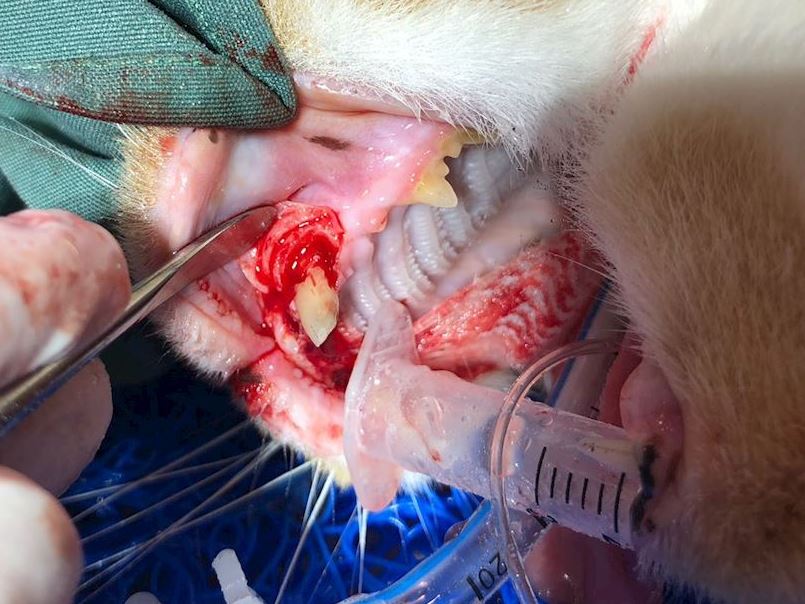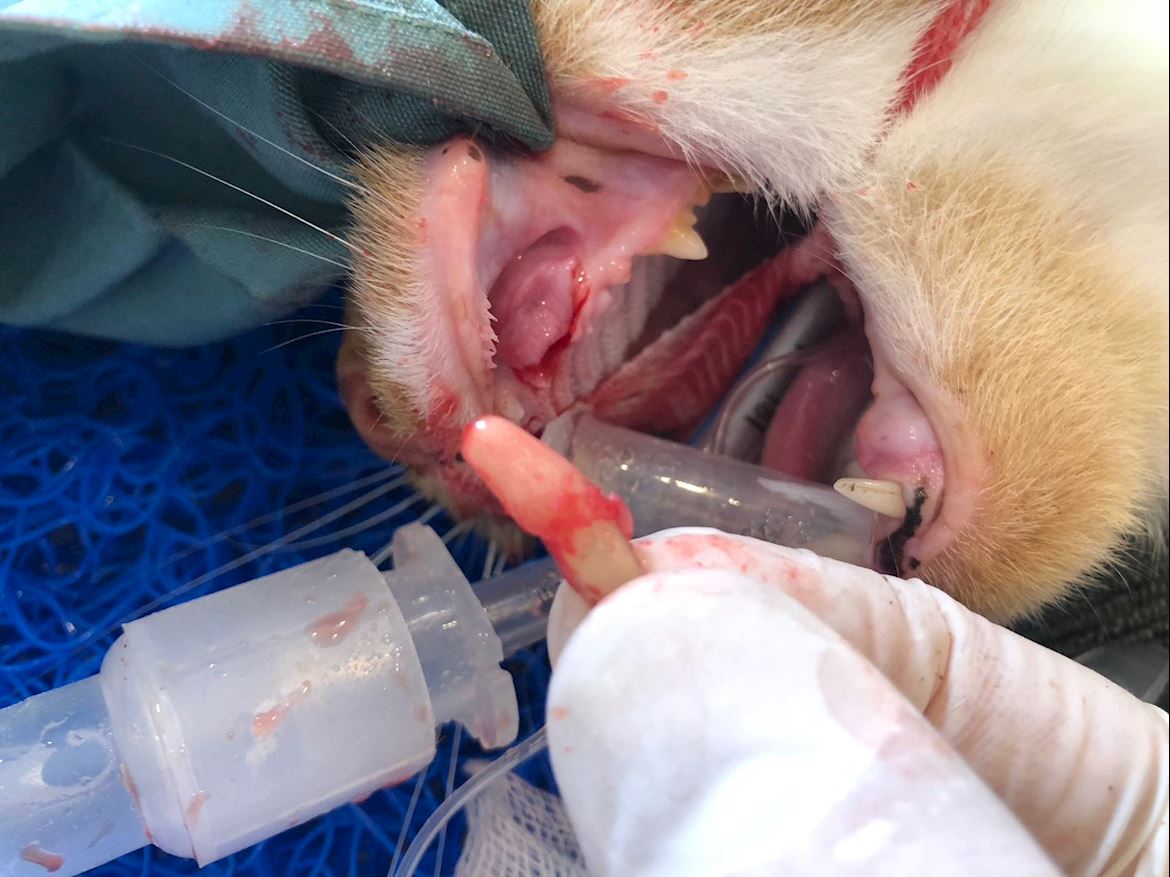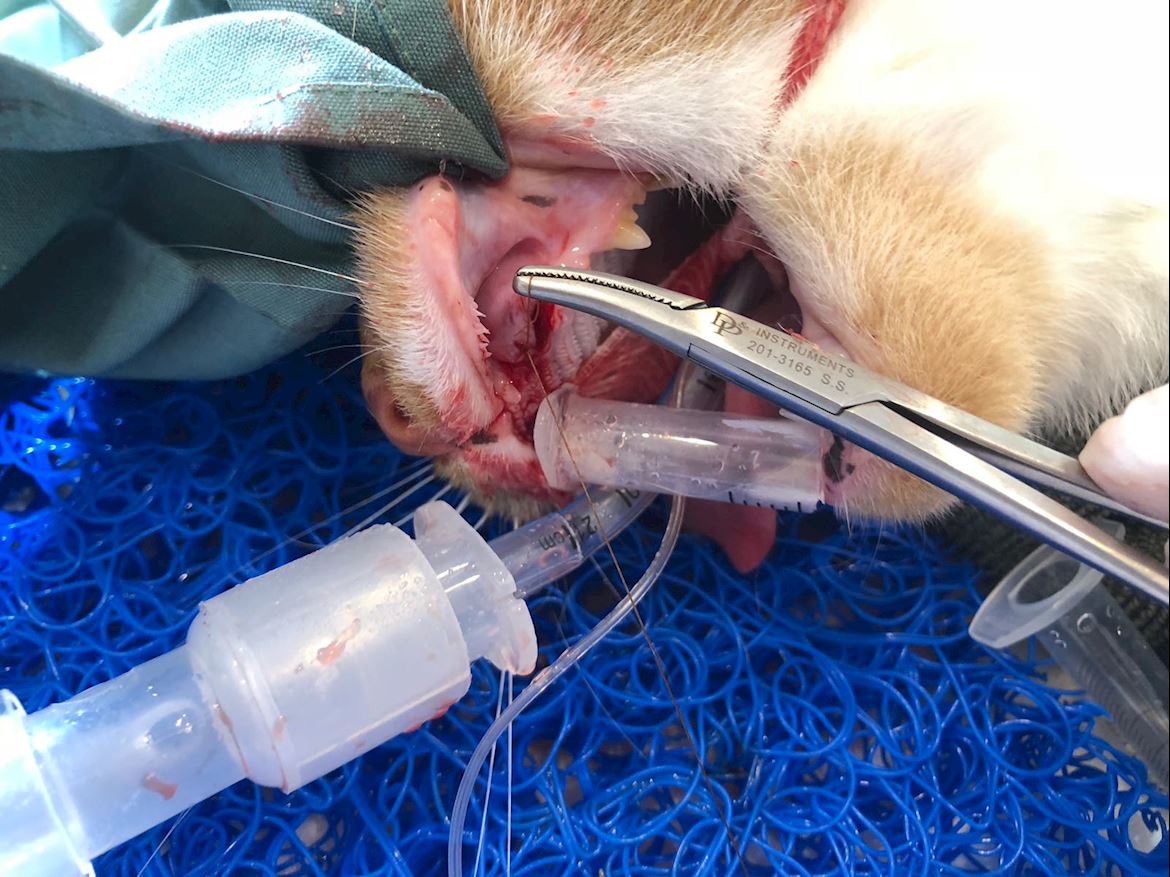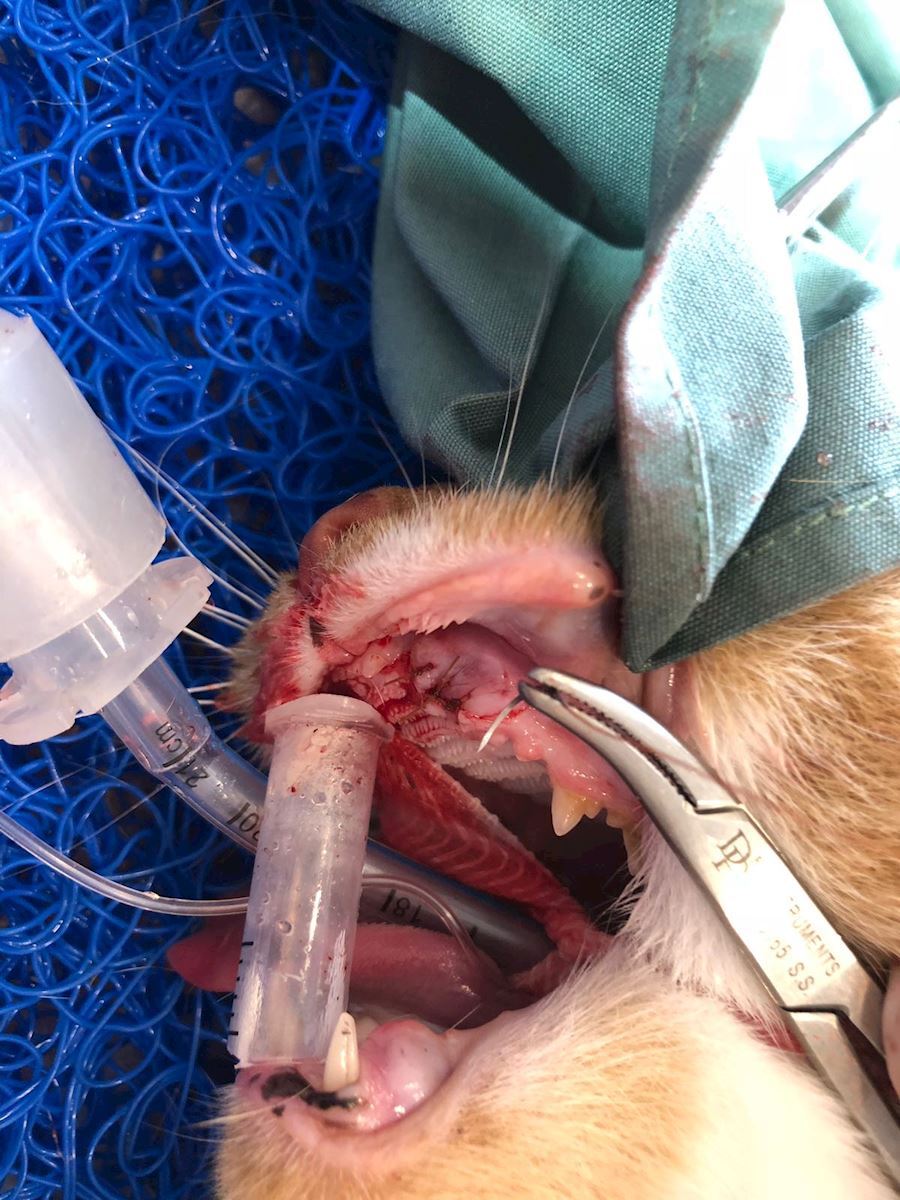Cat’s Broken Canine Tooth
Broken cat teeth are painful feline dental problems. Trauma is the most common cause of tooth fracture in cats. The upper canine teeth are the most common teeth to be fractured (broken). Canine teeth fracture when cats jump down from heights. The tips of these canine teeth often fracture from the impact.
Why Feline Dentist treatments ?
Fractured teeth hurt and become infected. They are really painful ! You would be at the human dentist ASAP and on pain relief meds..
A case Report at the cat dentist. – Bailey came in for her regular vaccination and the fractured canine tooth was seen – extraction was recommended by the feline dentist- Dr Phil . The fact that the owner was not aware of the problem does not imply that it was not both very painful and infected.

Pain occurs in cats once the pulp is exposed, and nerve of the tooth exposed. . It is very painful, and infection will develop into the pulp cavity. Even the cleanest mouth has bacteria. Once pulp is exposed, bacteria invade the tooth canal. With time, bacteria spread through the pulp cavity and a tooth root abscesses occurs . (The pulp canal is a chamber within the tooth that houses the pulp tissue (the blood vessels and nerve within the tooth).

Note Most cats never show overt signs of pain or discomfort.!! Cats tend to show more subtle signs. Animals will sometimes avoid chewing on the same side as a fractured tooth and increased plaque and calculus at the affected tooth results
Gently Stitching the fragile feline oral cavity with thin absorbable stitching
Fractured teeth with pulp exposure can be seen on the veterinary dental examination. A black or pink dot in the middle of the biting surface of the tooth is seen.
If the pulp is not exposed the fractured tooth is treated with a bonding agent to seal it and sometimes a composite restoration. Like a “filling”
If pulp exposure is present in a fractured tooth then it is either treated or extracted – no other veterinary feline dental options.
These fractured teeth are painful, even if the pet is not showing obvious signs.
Infection will Occur ! at any time.
Most cats , however, do not show obvious signs of pain. These pets will typically chew on the opposite side of the mouth or avoid using the broken tooth until the nerve dies in a matter of weeks to months. Until the nerve dies, the exposed pulp is sensitive and most pets will react if it is touched or otherwise stimulated. Once the nerve dies, the open pulp canal is an area that food, saliva, debris, and bacteria can enter the tooth resulting in an infection of the pulp tissue. The pulp tissue enters the tooth at the tip of the root or roots, and as the infection overtakes the pulp, it extends through the root tip to the bone in this area. Again, most pets will not show signs of an infected tooth. The vast majority of pets with broken, infected teeth will not swell or drain pus at this site as one might expect, but the infection is managed by the immune system and smolders. The pain associated with the broken tooth changes from an acute pain to a chronic throbbing ache.

There are three options for treating this patient’s broken tooth.
First, the tooth can be extracted. Extraction will result in a large hole where the tooth used to be, and necessitates the tissues to be sutured together without tension to prevent food and debris from getting trapped in the wound. Humans would gargle with warm salt water to help keep the wound clean, but cats do not know how to gargle! Therefore, it is best to close an extraction site with absorbable stitches.
A second less recommended option IMHO in most cases is root canal therapy – requiring dental –X-rays and repeated follow ups, but results in saving the tooth ! If we get the fracture as soon as it happens, a root canal therapy called a vital Pulpotomy becomes the recommended option.

Bailey went home about 2 hours after the procedure.

I went to grab the canine tooth but my cat swollowed and was swollen, hoping she can digest it in stomach,seemed to be whole,but she is on flagl now ,so are teeth passable is my question thanks Janet